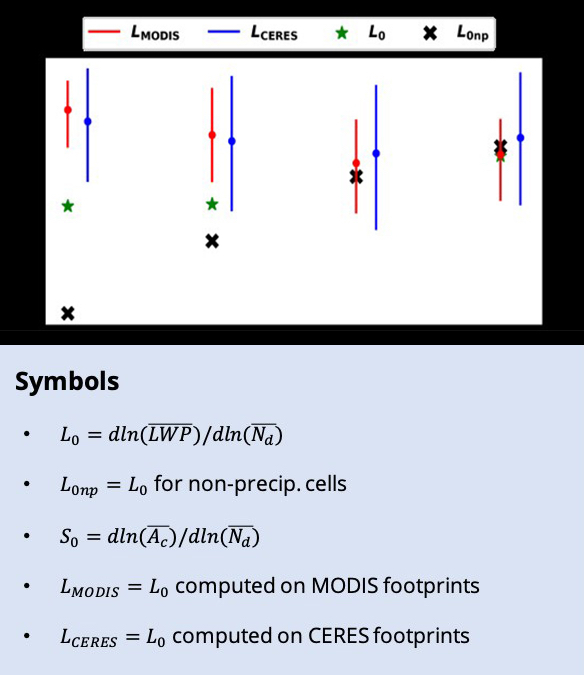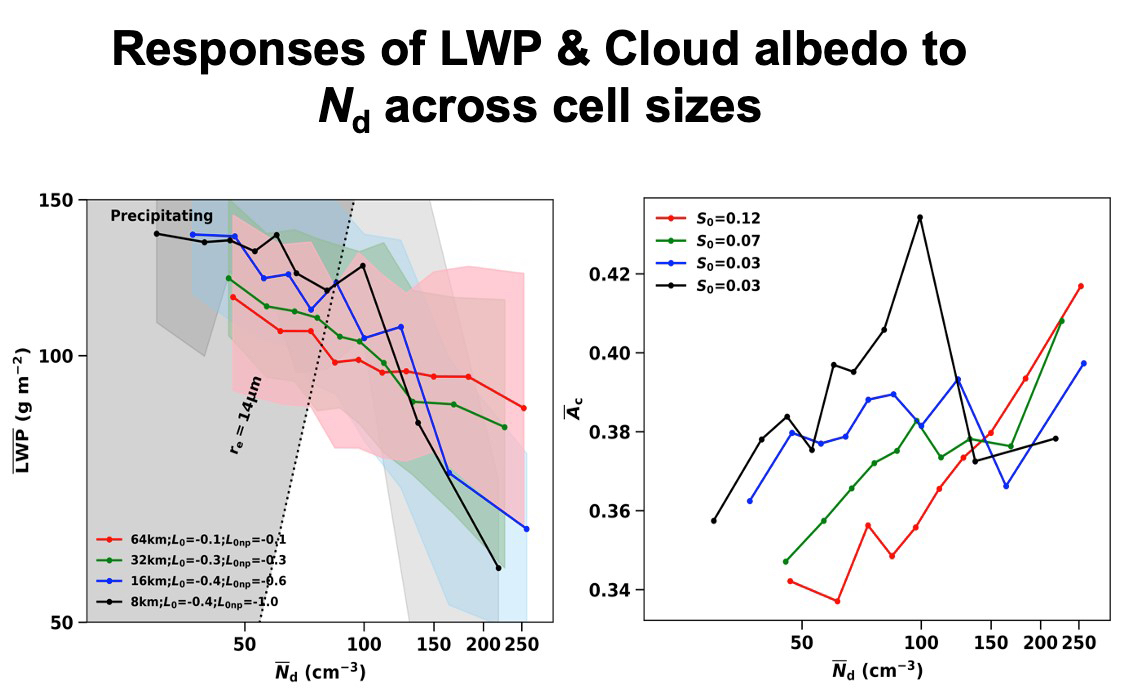Impacts of mesoscale cloud organization on aerosol-induced cloud properties
Submitter
Feingold, Graham — NOAA Earth System Research Laboratory
Zhou, Xiaoli — NOAA/CIRES
Area of Research
Cloud-Aerosol-Precipitation Interactions
Journal Reference
Zhou X and G Feingold 2023. "Impacts of Mesoscale Cloud Organization on Aerosol‐Induced Cloud Water Adjustment and Cloud Brightness." Geophysical Research Letters, 50(13), e2023GL103417, 10.1029/2023GL103417.
Science


Mesoscale cellular convection cell size significantly regulates aerosol-induced cloud albedo changes via its effect on cloud water adjustment. We find notable intra-cell co-variability between cloud liquid water and drop concentration within cells. This variability varies with cell size.
Impact
This study finds for the first time that stratocumulus organization at mesoscale has an impact on aerosol cloud interactions. These findings carry far-reaching implications for aerosol-induced climate forcing and future climate predictions. This study also quantitatively reports intra-cell co-variability between cloud liquid water and drop concentration within cells, shedding light on the perilous consequences of erroneously attributing this co-variability as a response of cloud water to drop concentration. This discovery underscores the need to rectify such misinterpretation.
Summary
Low clouds over the ocean often exhibit organized patterns with characteristic cell sizes, but the effect of this organization on cloud-aerosol interactions is not yet fully understood. Here we group seven years of satellite-measured low cloud cells over the North Atlantic Ocean by their cell size to investigate how cell size influences the response of cloud water and cloud brightness to cloud droplet number concentration perturbations. Large-scale cells are found to have less efficient depletion of cloud water in response to increasing drop number compared to small-scale cells. This leads to nearly an order-of-magnitude-stronger increase in cloud brightness with increasing drop number. Furthermore, we show that the spatial distributions of liquid water path and drop concentration vary with cell size. Mistakenly assuming the local correlation between cloud water path and drop concentration to be a causal response can cause a significant positive error, especially for small-scale cells.
Keep up with the Atmospheric Observer
Updates on ARM news, events, and opportunities delivered to your inbox
ARM User Profile
ARM welcomes users from all institutions and nations. A free ARM user account is needed to access ARM data.


















